We're an affiliate
We hope you love the products we recommend! Just so you know, we may collect a share of sales or other compensation from the links on this page at no additional cost to you. Thank you if you use our links, we really appreciate it!
The cute little Pomsky dog breed is not a true purebred, but rather a designer breed of Pomeranian and Siberian Husky parents.
Pomskies are quickly gaining a sweet spot among pet lovers across the West, mainly because of their irresistible cute looks.
These little furry balls have a mix of qualities from their parents but with less demanding needs in the grooming department.
Are you considering getting a Pomsky companion dog? Below, you’ll find all the necessary details about these designer dogs that you need to know before committing to one.
A Brief History of Pomsky Dog Breeds
Pomskies are a relatively new designer breed, as such, they don’t have an elaborate history compared to other popular crosses.
Although it’s believed Pomskies existed by 2009, official records show that the first litter was bred in 2012 in the US.
Pomskies were designed by crossing a Siberian Husky with a Pomeranian through artificial insemination mainly to avoid the possibility of complications.
These designer dogs gained popularity among the masses only two years after they were officially designed in the US.
This has caused hundreds of dog breeders across North America and Europe to adopt the breeding program of Pomskies.
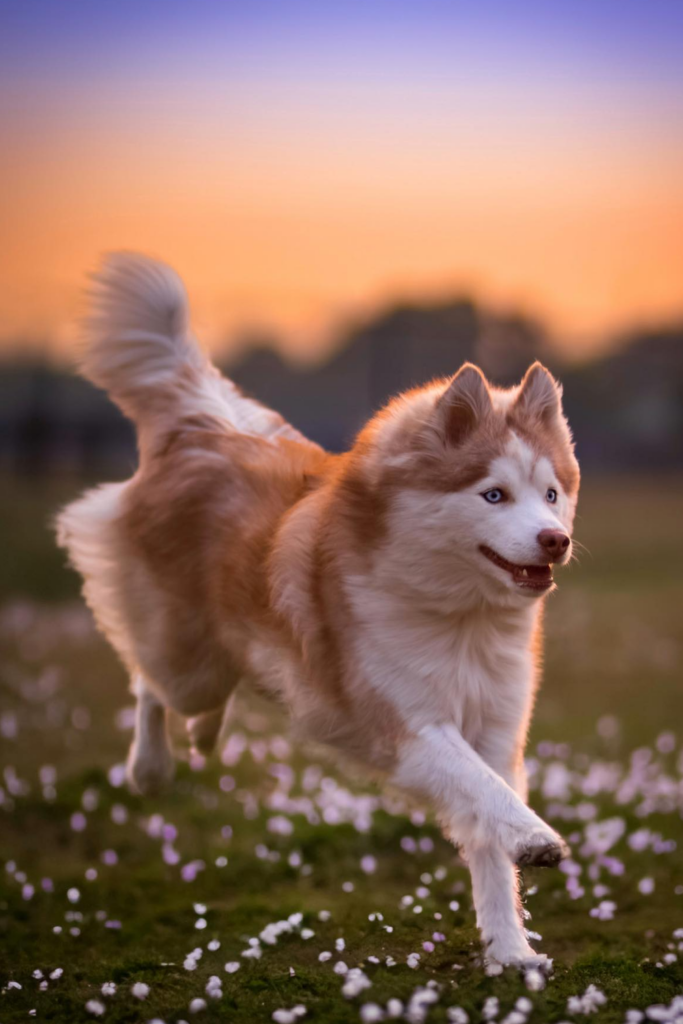
Most breeding standards of Pomskies are yet to be established because these designer dogs are still relatively new.
Although the American Kennel Club does not recognize Pomskies as a breed, we have the International Pomsky Association which regulates the breeding program of these little canines.
Another reputable organization to look out for is the American Pomsky Kennel Club which works tirelessly for the recognition of this designer breed.
5 Facts About Pomskies That You Didn’t Know Before
1. Pomsky is a cross between Pomeranian and Siberian Husky dogs
Pomsky is a true designer dog breed stemming from the genes of both Siberian Huskies and Pomeranians.
By combining these two unique breeds, the Pomskies emerged with a good mixture of traits from both parents including appearance and demeanor.
In terms of proportion, Pomskies take more physical characteristics from their Siberian heritage and embody them in the Pom’s compact size and fluffy coat.
2. They have varied temperament
Being that Pomskies are a result of mixing two distinctive dog breeds, they therefore have considerable variation in temperament and demeanor depending on the order of cross-breeding.
Due to the uncertainty in temperament from one litter to another, it is recommended to breed these dogs through first-order crossing and not inbreeding.
3. Pomskies can be susceptible to health issues
Both Siberian Huskies and Pomeranians are susceptible to several health issues and this can only mean that the combined problem is likely to be passed on to the new designer breed.
Health issues like hip dysplasia, tracheal collapse, progressive retinal atrophy, skin irritations and issues, allergies, luxating patellar, and cardiovascular diseases are likely to impact Pomsky’s life.
Reputable breeders can reduce genetic issues when reproducing purebred dogs by choosing the parents carefully, but this may not be the case when developing designer pups.
4. Pomskies need lots of training
Pomskies are an intelligent lot of little pups, but they can be stubborn sometimes which makes it necessary for owners to provide adequate training.
Breeders have observed that this independent streak is more likely to come from the Pomeranian parent.
Besides their strong personalities, Pomskies are also packed with high energy which can be channeled into destructive routes when the dog is bored.
Providing consistent positive-based training and asserting your leadership early enough will help your dog develop into a well-rounded adult.
5. Pomskies are too vocal
Both Siberian Huskies and Pomeranians are known to be quite good vocalists, and Pomskies certainly took up those loud traits.
Although not as excessive as those of their parents, you can expect your Pomsky to communicate with barks, howls, and whines when they need your attention.
The good news is that you can train your dog not to bark excessively by following the right procedure and being consistent with the schedule.
Pomsky Puppies – What to Expect
Being a designer pup, welcoming a new Pomsky into your home requires consistent commitment and dedication to ensure they grow without experiencing health issues.
These little-spirited companions demand lots of playtime, fun activities, and consistent exercise to maintain them at best.
Potential pet parents should be ready to deal with a few cases of mischievousness from their little cute canine buddies.
You can expect endless zoomies across your rooms, some bit of destructive chewing during teething, and vocalization when the puppy meets an unfamiliar guest.
With proper training and a guiding hand, you can shape your Pomsky into good behavior right from their puppyhood years and enjoy a lifetime of good times with them.
Pomsky Physical Characteristics
Size and weight ranges
A fully grown Pomsky has a healthy weight of about 20 to 30 pounds, but you can expect slight variation between males and females of similar generation and parental traits.
Most Pomskies have a shoulder height of 10 to 15 inches which places them somewhere between small to medium-sized dogs.
Pomsky Coat Characteristics
The coat appearance of Pomskies can vary depending on the most dominant parent’s genes. Most of them have a fluffy coat from the Pom’s side and a soft texture from the Siberian Husky’s side.
With the thick and dense double coat, Pomskies can live comfortably in areas with cold climates because the undercoat provides sufficient warmth.
These designer dogs’ outer coats may have long fur which can be straight or curly depending on the dominant genes.

Pomsky’s coat color can vary a lot based on their parent’s characteristics. Their Pomeranian parent can pass down anything from the popular classic orange and red to fancy shades like chocolate.
Husky genes on the other side may bring in cool combinations of black and white, gray and white, or even an eye-catching all-white coat, except merle pattern.
Distinctive features
Despite their striking resemblance to miniature Huskies, the second most distinctive physical feature of Pomskies has to be their curled tail that arcs over the back, thanks to the Pom’s influence.
These beautiful dogs also have small triangular ears that stem from their Husky heritage to give them a foxy appearance and ever-alert expression.
Another top highlight about Huskies is their eyes which often have a piercing blue reminiscence of their Siberian parents. Some Pomskies may have hazel eyes or a cool mixture of both brown and blue.
Pomsky Temperament and Personality
Pomskies are fun-loving, playful, and incredibly smart dogs who can make excellent companions for families so long as they receive love.
These little fluffy balls come with a possible stubborn streak that emanates from their Siberian Huskies heritage.
Novice owners may experience a few hurdles when it comes to training because of the strong-willed nature of these designer pups.
Pomskies can be inclined to form special bonds with one family member, but they always welcome the idea of connecting with as many family members as possible.
Pomskies are contented to live in a family with kids, but it’s a better idea to have them around older children who know how to gently interact with pets.
These little dogs can have a high prey drive, so we recommend keeping them with similar-sized or larger pets to tone down their sense of hunting.
Pomsky Intelligence
Pomskies are incredibly smart dogs! They inherited their brainy nature from both the Huskies and Pomeranians who are equally good at solving basic problems.
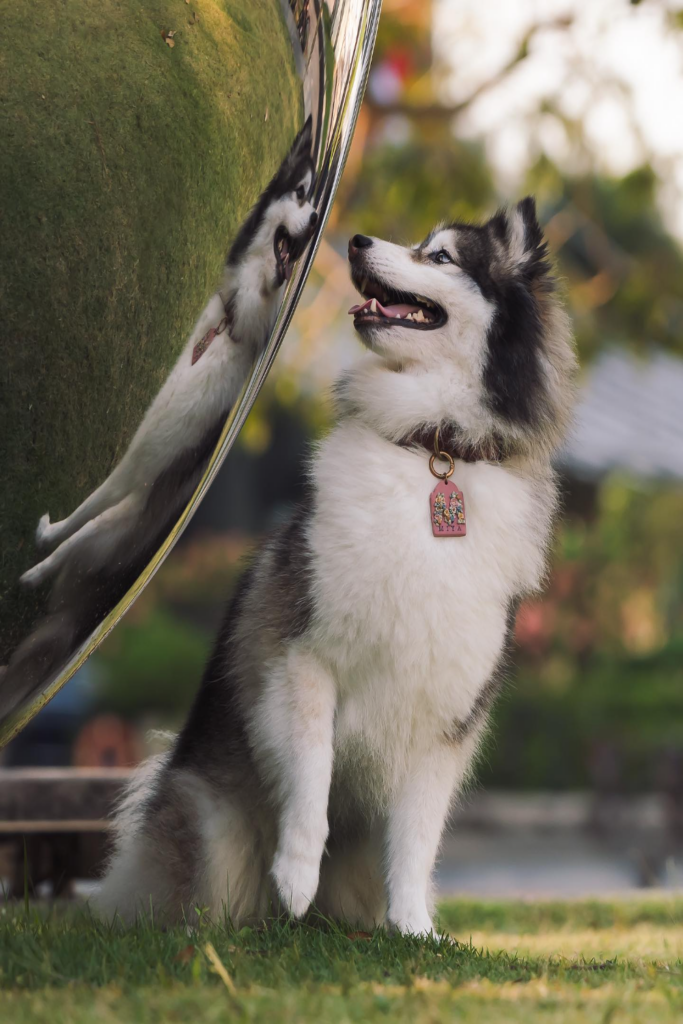
The impressive intelligence of Pomskies makes them an ideal candidate for obedience and command training though their stubborn streak may slow down your outcome.
Pomsky Average Lifespan
Having been developed a few years back, dog experts have estimated the average lifespan of Pomskies to be about 12 – 15 years.
This means you can share a fulfilling decade-plus of happiness with this designer breed, so long as you keep them in upbeat condition at all times.
Pomsky Common Health Issues And Genetic Disorders
Just like other designer breeds, Pomskies are susceptible to a variety of health problems and genetic disorders stemming from their purebred parents.
Below are some of the health concerns you need to watch out for when considering adding this breed to your home:
1. Hip and elbow dysplasia
These joint problems are not a very major concern for young Pomskies but they can become an issue when your dog ages.
Hip and elbow dysplasia are caused by the abnormal development of the respective joints, leading to reduced mobility in affected canines.
2. Degenerative disk disease
This painful condition affects the discs of the dog’s spine and can cause lameness if not given proper attention.
3. Heart Disease
Pomskies can be at risk of developing cardiovascular problems including mitral valve disease and aortic stenosis. Regular screening should help detect abnormal conditions of the heart in good time.
4. Eye problems
Glaucoma, corneal dystrophy, progressive retinal atrophy, and cataracts can all affect Pomskies. Keep an eye out for any vision changes and swiftly report any anomaly to your vet.
5. Bloat
Deep-chested dogs like Pomskies are prone to Gastric dilatation-volvulus (GDV), also known as bloat. This life-threatening condition occurs when the dog’s stomach twists and cuts off blood supply.
6. Allergies
Pomskies may be prone to food, environmental, and flea allergies. Common symptoms of sensitivities in Pomskies may include itching, skin irritation, and ear infections.
7. Patellar Luxation
Patellar luxation is a condition where the kneecap dislocates or ‘pops out’ from its normal position, causing pain, discomfort, and possible lameness.
Pomskies may be prone to patellar luxation due to their relatively small size and genetic factors. Surgical correction may be necessary in severe cases.
8. Dental Problems
Pomskies may be at risk of suffering dental issues such as tartar buildup, gum disease, and tooth decay if proper dental care is neglected.
Preventative Measures for Good Pomsky Health
Do your homework right when planning to get your Pomsky from a breeder. A reputable breeder should prioritize screening both parents to ascertain a clean bill of inherited conditions.
You should also keep up with consistent visits to the vet for updated vaccinations, regular checkups, and preventive care.
It’s also essential to provide your dog with a high-quality balanced diet tailored to their nutritional needs for proper growth and development.
Give your Pomsky enough chances to play and walk with them regularly across the streets to keep a good shape and healthy weight.
You can also keep your Pomsky safe at home by pet-proofing your yard to prevent accidents and injuries. Research dog-toxic houseplants and keep them away from your pup’s reach to avoid poisoning.
Pomskies and Allergies
The gorgeous fluffy coats of Pomskies come with challenges to allergy sufferers. Just like any other dog breed, their dander, and saliva might trigger a negative reaction in some individuals.
Existing allergies can also be made worse by the dog’s thick coat which traps dust and pollen. Just like their Husky parents, Pomskies shed quite a lot year-round, especially during seasonal changes.
Pomsky Grooming Needs
Pomskies have a thick double coat that sheds heavily, so you need to maintain a good grooming routine to keep them looking great.
Regular brushing is essential to keep their coat healthy and prevent loose fur from ending up in your cozy bed or furniture.
Brushing with a slicker brush or grooming rake also helps to minimize mats and distributes the natural oils on the dog’s skin to leave a soft and shiny appearance.
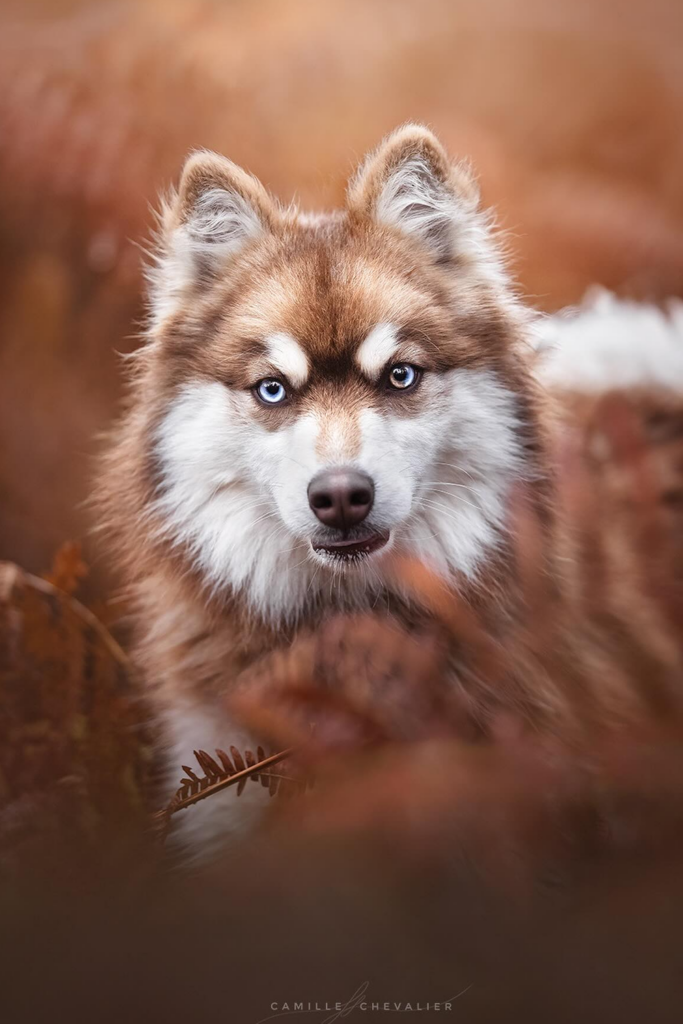
Unless they have a muddy adventure, Pomskies generally need one bathe in a month. Frequent baths can cause the skin to dry and get itchy. Just make sure to use mild dog shampoo and warm water.
Plan weekly nail trims to keep your Pomsky’s paws in good condition and brush their teeth every day with canine toothpaste to reduce the likelihood of dental problems.
It’s also judicious to watch your dog’s ears for signs of infections such as redness, excessive wax, and rashes. Use a cotton wool ball moisturized with a vet-approved ear cleanser to clean both ears.
Pomsky Exercise and Activity Levels
Despite their relatively small size, Pomskies are packed with overflowing energy. Aim for at least 30-60 minutes of daily exercise which can further be broken down into smaller manageable sessions.
Some suitable activities you can offer your Pomsky include brisk walks, runs, playing fetch, agility courses, and occasional hikes.
Importance of mental stimulation
In addition to physical exertion, pet parents should aim for interactive activities that stimulate their Pomskies mentally.
Brain games can help your dog develop their problem-solving skills, which can in turn account for a more responsible canine companion.
Activities like solving food puzzles can prevent adult Pomskies from showing early signs of dementia or other cognitive problems.
Mentally stimulating games can also strengthen the bond and emotional connection between you and your lovely Pomsky.
Pomsky Training and Socialization
Being strong-willed and aloof, proper training is important to shape your Pomsky’s behavior right from their puppyhood years throughout their adult life.
Focus on reward-based training and avoid punishing your dog when they don’t show progress in the manner you anticipated.
Pomsky Living Conditions
Your Pomsky will be more than happy to live in a home with a securely fenced yard for safe play, exercise, and endless zoomies.
These little fur balls thrive where they receive lots of human attention, so be careful not to leave them lonely at home for extended periods.
People living in apartments can also keep Pomskies, but they need to be more committed to catering to the dog’s need for outdoor exercise.
Pomskies are not the best fit for hot climates, and their vocal tendencies may bother your noise-sensitive neighbors in close quarters.
Pomsky Diet & Nutrition
The foundation of a healthy Pomsky lies in the provision of a high-quality diet that incorporates a good mix of all essential nutrients, vitamins, and minerals.
Focus on providing a well-portioned serving of meat-based proteins, and a tiny taste of dog-safe fruits and vegetables to keep your Pomsky healthy.
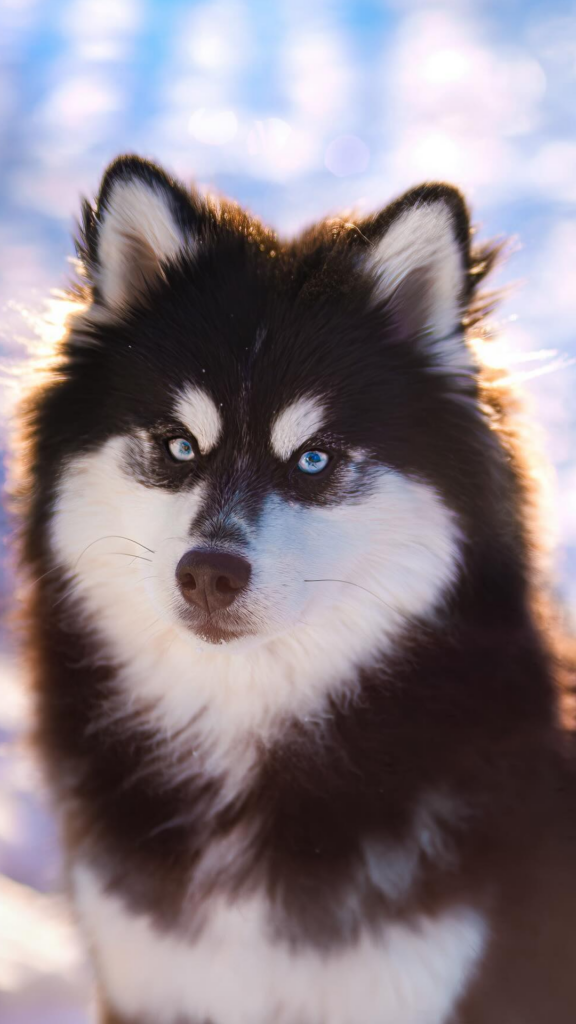
It helps to avoid kibbles with excessive fillers and artificial additives for your dog’s health. Pomskies can have a large appetite, so be strict on portion control.
If you’re not sure what to give your Pomsky, we recommend consulting with a qualified vet nutritionist for tailored advice about your dog’s nourishment needs.
Pomsky Pregnancy & Litter size
Pomsky breeding should only be considered after serious consultation with a veterinarian due to the health risks for these hybrid dogs.
If proper breeding does occur, Pomsky’s gestation period lasts for about 63 days and you can expect a litter size range from 5 to 7 puppies, with significant variation for individual dogs.
Conclusion
If you’re considering adding this cute designer breed to your household, thorough research into relevant Pomsky dog breed info is essential.
Make sure you understand their unique temperament, training needs, exercise requirements, and potential health concerns.
You can refer to the American Pomsky Kennel Club for more information about registered breeders who raise healthy Pomskies.
Related Read
Laura is the founder of Furs'n'Paws. She is a also a pet writer and expert with more than 20 years of experience of working with dogs and cats. She developed a very strong love for animals at a young age. Her passion led her to establish a thriving pet sitting and dog walking business in Dubai. As an expert in pet training, behavior, and nutrition, Laura is committed to helping pet owners and pet lovers by offering high-quality information on a wide range of topics.


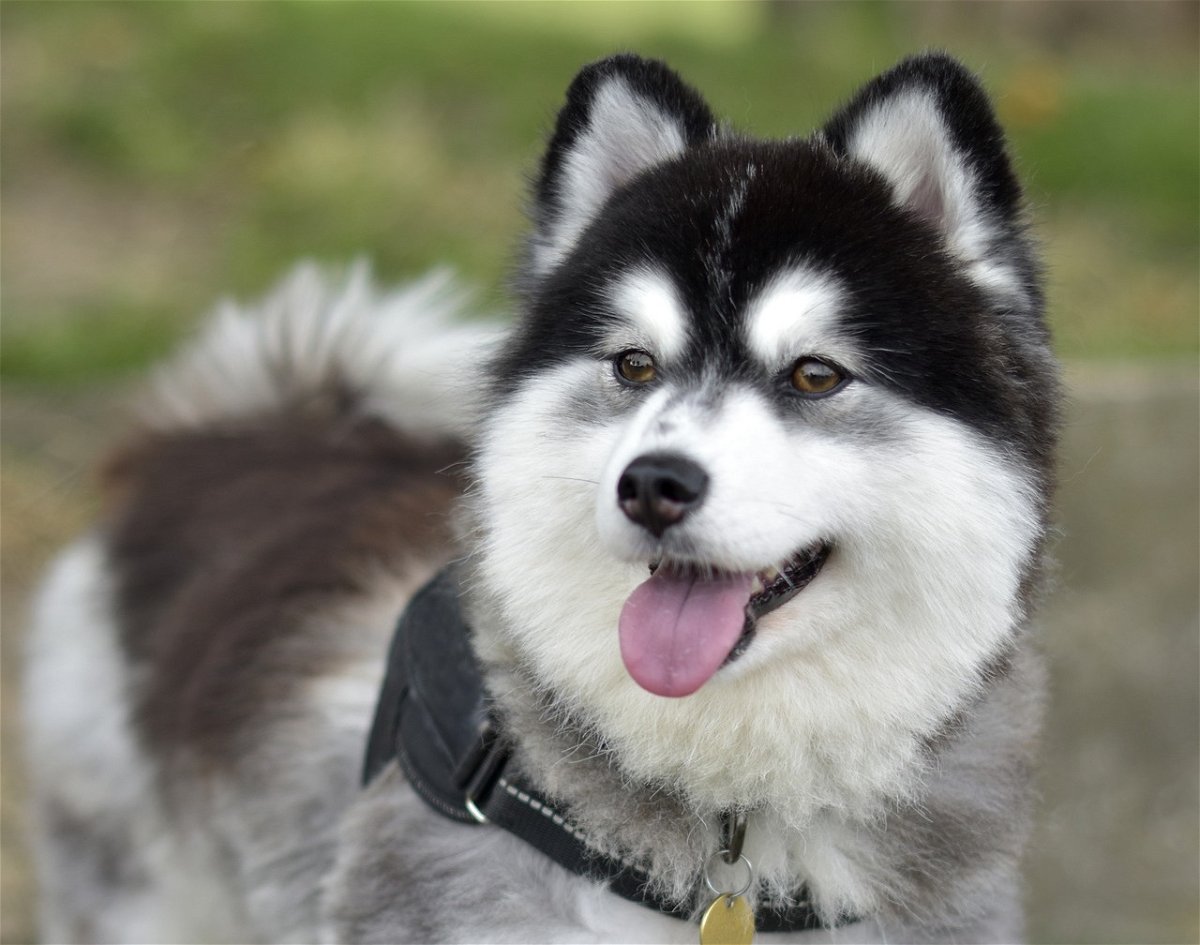
No responses yet